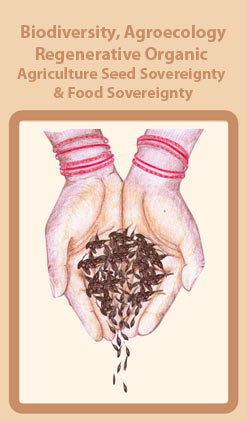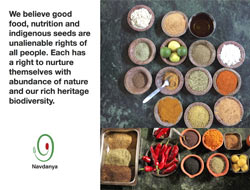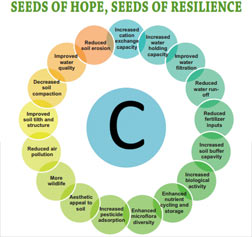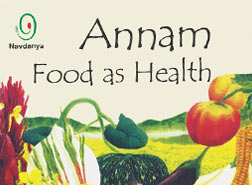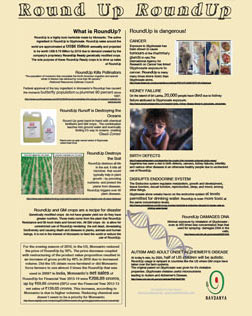European agriculture Scientists in the 18th & 19th centuries (Sir Albert Howard and Dr. J. A. Voelcker) concluded that there was little room for improvement in cultivation practices in India, rather we need to learn from them how to make use of the available resources.
Period of British colonization saw extensive change. Much land came into the hands of larger landowners (Zamindars) who often changed over to cash crops for external markets, including Britain. Ancient skills and water-management systems fell into disuse, impacting the entire agriculture system.
Further, as local people lost access to forests, which were either felled or enclosed, they were compelled to use cow-dung as fuel– again taking fertility out of the farming system.
In the 1960's Green Revolution was adopted based on high inputs of water soluble synthetic chemicals which require intensive irrigation and introduction of varieties which responded to intensive chemical application. The misnomer "High Yielding Varieties" was applied to these high response varieties of wheat and rice.
Fifty years of Green Revolution practices have left soils depleted of nutrients, ground water has been mined, the biodiversity of crops has been replaced by monocultures, and farmers are riddled in debt due to the dependence on costly external inputs.
Despite the expansion of high external input based industrial farming, popularly known as 'Green Revolution’, most of the food consumed worldwide is still produced by smallholder farmers i.e. family farms. It is estimated that about 80% of the total world's population is being fed by the small family farms.
What is Agroecology?
Agroecology is holistic study of agro-ecosystems, including all environmental and human elements that focuses on the form, dynamics and functions of their inter- and intra-relationships. It can also be defined as an ecological approach to agriculture that views agricultural areas as ecosystems and is concerned with the ecological impact of agricultural practices. Agroecology allows deeper scientific understanding of agriculture as it applies ecological principles to systems of food production taking into account relationships between different components of the agroecosystem including the human community. It teaches us to be in tune with nature while producing a diversity of healthy, nutritive and delicious foods, using sources of nature. Agroecology, in essence, is the philosophy of relishing all edibles that nature produces and, at the same time, of nurturing nature to allow it blossom with its biodiversities.
Agroecology also delivers the social benefits associated with poverty reduction and community empowerment. At one hand where it reduces the possibility of environmental degradation, on other hand it is capable of delivering the environmental benefits through efficient resource use and reduced environmental impacts (both on - and off-farm). It also help protect biodiversity and enhances the resilience against the shocks associated with accelerating climate change. Agroecology is the emerging scientific paradigm based on the recognition of the ecological principals when applied to agricultural systems. Some of these ecological principles have been practiced in traditional agriculture and some of them have come from new findings in ecological disciplines, such as biodiversity and soil food web.
Agroecology is time-tested and proven traditional way of farming that was evolved by farmers suiting to their diverse agro-climatic conditions. The experience of farmers around the world using agroecological methods has provided enough evidence of its economic, social and environmental benefits. Agroecological approaches have delivered increased food production and improved income for farmers, and enhanced food security and nutrition for the communities they feed. The input costs go down with time and farmers not only reduce the cost of cultivation but also increases the output.
Why Agroecology ?
In agriculture there is no sudden shift from one system to the other. A system evolves with time. Farmers have been changing their agricultural systems from time to time and according to circumstances. There has been a good deal of diversity among agricultural systems. Different systems were evolved in different geographical settings by different cultures. Primitive agriculture and traditional agriculture encompassed enormous diversity of farming systems. Therefore the agriculture under these two broad categories is extremely resilient and sustainable, and ensures us a sustainable future.
Agroeology is inevitable to provide balanced environments, sustained yields, biologically mediated soil fertility and natural pest regulation through the design of diversified Agro-ecosystem and the use of low-input technologies.
Principles of agroecology revolve round an agroecosystem – community of plants, animals and microorganisms, the three functional biotic components, interacting with each other and among themselves and with the physico-chemical environment modified by farmers to produce foods, fodder, fiber, fuel, and other useful products. Agroecology provides us an opportunity to make a holistic understanding of the agroecosystems which we design and manage for food production. Since ages farmers had been protecting, conserving and augmenting natural resources, such as forests, grasslands, biodiversity in forests / agro-biodiversity, livestock, soil, water resources, and overall farming cultures through applying the principles of agroecology.
Agroecology helps us understand and maintain vital mineral cycles, biological processes, energy transformations, and socioeconomic relationships in an integrated manner. Agricultural strategies woven around the principles of agroecology look into local geographical and socioeconomic specificities, environmental and cultural specificities, and obeys people’s traditions, such as food habits, festivities and their ethical and aesthetic values (Singh et al 2014).Some of the strategies for diversification of agro-ecosystem are:
Agroforestry Systems, Mixed farming /Polycultures. Cover Crop, Crop Rotations and Livestock.
Reduction of 7% in microbial biomass was observed due to only chemical fertilizer application, whereas 22% decline in microbial biomass was obtained when herbicides was applied along with chemical fertilizer. In different agro ecosystems under organic farming 4 and 63% enhancement in microbial activity was noticed under different crops of various (Shiva and Bhatt 2009).
So there are enough evidences to prove that agroecology is not only profitable, but is also environment friendly and sustainable. Studies carried out in diverse ecosystems through the globe show that by conserving biodiversity and adopting organic farming, small farmers can increase their production and incomes. Food sovereignty, food security and food safety requires an urgent change in policy from chemical intensification which is leading to debt and suicides to biodiversity intensification which is creating a living economy of food. In the past and even till date agroecology has spread and being applied by many farming communities around the world, primarily through a process of farmer- to-farmer knowledge sharing. Its main inputs and investments are information, best practices, knowledge of local conditions, and the natural resources of local eco-systems. It is not dependent on synthetic chemical fertilizers, pesticides or transgenic crops, which are not only expensive for small and marginal farmers but are also resource-depleting. Keeping in view the challenges like climate change mitigation and adaptation, as well as future food security; empowering the family farmers in agroecological approach could play a crucial role, as agroecology offers the prospect of sustainable food production to meet the needs of a still growing global population. Agroecolgical farming also helps reducing the GHG emissions from the agricultural sector and also building resilience to already unavoidable climate change, protecting biodiversity, and sustaining communities and rural livelihoods.
The challenge of feeding nine billion people by 2050 can be met without any problem through getting back to agroecological methods for increasing nutritional yields and reducing the environmental impact and addressing the food wastage / loss at different stages from farm to table vis-a-vis Market access for small hold family farms.
Agroecological practices enhance on-farm fertility production. Malawian farmers call it a “fertilizer factory in the fields.” These practices reduce farmers’ reliance on external inputs and state subsidies. This, in turn, makes vulnerable smallholders less dependent on local retailers and moneylenders.


